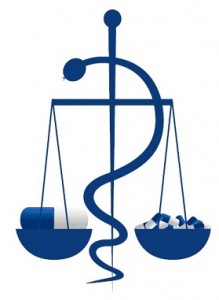 While opioid medications are considered powerful painkillers, evidence shows taking a combination of ibuprofen and acetaminophen can be more effective in treating pain, according to Dr. Don Teater, MD, Medical Advisor of the non-profit National Safety Council.
While opioid medications are considered powerful painkillers, evidence shows taking a combination of ibuprofen and acetaminophen can be more effective in treating pain, according to Dr. Don Teater, MD, Medical Advisor of the non-profit National Safety Council.
Using non-opioid painkillers for acute pain is also safer, and can help reduce prescription drug abuse, Dr. Teater says. He will speak about the use of alternatives to opioids in pain management at the upcoming Rx Drug Abuse Summit in Atlanta.
“So many people are dying from abuse and addiction to opioids,” Dr. Teater says. “But that is not the only reason we should be prescribing fewer opioids. In many cases they are less effective than NSAIDS (non-steroidal anti-inflammatory drugs). Research has shown use of opioids after injury or surgery prolongs recovery, and increases the chance of chronic opioid use, addiction and permanent disability. These findings have been supported in the medical literature, but many doctors don’t know about it.”
According to a white paper from the National Safety Council, there is little evidence that opioids are helpful when used for chronic pain. “In fact, some evidence shows they may be detrimental and increase risk of addiction and premature death,” the paper states.
The use of opioids to treat pain has skyrocketed in the past two decades, largely because opioid medications are felt by medical providers to be safe and effective in treating pain. Dr. Teater notes there are dangers associated with NSAID use, such as gastrointestinal side effects including potentially deadly bleeding. NSAIDs can also worsen kidney function and cause cardiovascular events. These side effects, however, are dose dependent. Over-the-counter doses of ibuprofen are very effective at relieving pain and are very safe. Despite these risks, opioids are much riskier and dangerous to prescribe, he says.
The National Safety Council advises the following measures to reduce opioid use:
- Doctors should use opioids rarely, only when indicated, and for just a few days.
- Dental providers should rarely prescribe opioids and limit the prescription to one to two days.
- Public agencies, insurance companies, and pharmacy benefit managers should put restrictions on the use of these medications.
- Because tolerance and withdrawal can occur within five days of starting opioid therapy, any prescription over five days should require prior approval.
- Opioid use for routine dental procedures, back pain, headaches, fibromyalgia and injuries that do not require hospitalization should require preapproval.
- Insurance companies should develop mechanisms to facilitate non-drug treatment of pain including appropriate physical therapy and counseling.
- Everyone on chronic opioid treatment should have periodic evaluation to assess the risk of opioid-related side effects.
Limited use of opioids for treatment of pain is appropriate in some cases, such as treating a patient who has suffered multiple traumatic injuries, Dr. Teater notes. “But opioids should not be used for a long time, and should not be used for common pain such as injuries to the ankle or back.” The white paper concludes, “The evidence is clear that opioids are dangerous medications that should only be used with great caution when all other options have failed.”
In his own practice, Dr. Teater surveyed his addiction patients and found half said they had become addicted from legitimate prescriptions from a doctor.
Doctors need more education to understand the drawbacks of prescribing opioids, according to Dr. Teater. “Doctors get a lot of training in the physical aspects of health, but not the mental aspects,” he says. “We don’t get training in addiction. Often, a doctor will start a patient on opioid pain medication and continue it for awhile. Then if the doctor feels the patient is asking for too much medication, the doctor will cut them off, and abandon them. There needs to be a greater understanding of the emotional component to pain. We also need to have a better understanding of the disease of addiction.”
Published
April 2015
 Get Support
Get Support
